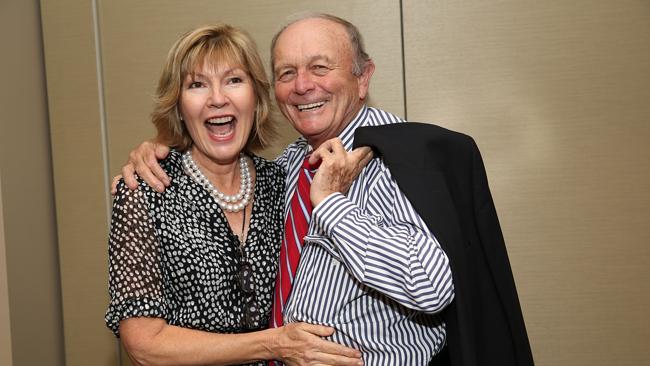Harvey Norman saw its annual net profit for fiscal 2015 lift by 26.6 % to $268.1 million, from $211.70 million in 2014. Excluding property revaluations, annual net profit was up 19% to $261.84 million, from $220.1 million. Harvey Norman chairman, Gerry Harvey has attributed the growth outlook for the property market in Australia as positive, pointing to new starts, renovation expenditure, and secondary market clearance rates as significant drivers.
Echoing his comments at the company’s recent Conference and Expo, Harvey said the group’s franchisees were performing strongly and gaining market share. “I remain positive about the outlook for Harvey Norman,” he said.
“In what is still a generally challenging retail environment, we have seen further improvement in the performance of each of our business segments,” he said.

Harvey Norman CEO Katie Page with her husband and company chairman Gerry Harvey.
Store sales up 5.5%
The company said that from July 1, 2015, to August 27, 2015 sales from franchisee stores were up 5.5%, with like-for-like sales up 6.6% on the prior corresponding period.
Harvey said the 2015 results were good and showed the strength of the group’s integrated retail, franchising, property and digital system.
He added that the group’s investment in its physical stores, online sales, and mobile and social media platforms, was paying dividends. Strong franchisee sales growth meant Harvey Norman could also reduce tactical support to franchisees.
Solid category performance
Harvey Norman said that in the computer category, sales of computer hardware, accessories and mobile devices were solid. Sales of wearable fitness and health products continued to expand.
Company-owned stores lifted profit before tax by 42.9% to $41.03 million. And, operations in New Zealand outperformed in a competitive market.
Irish losses stemmed
Increased brand recognition and improved economic conditions resulted in a 40 per cent drop in trading losses in Ireland and Northern Ireland. This was partially offset by operations in Asia, where an erosion of gross margins and higher costs associated with new store openings resulted in a fall in profitability.

